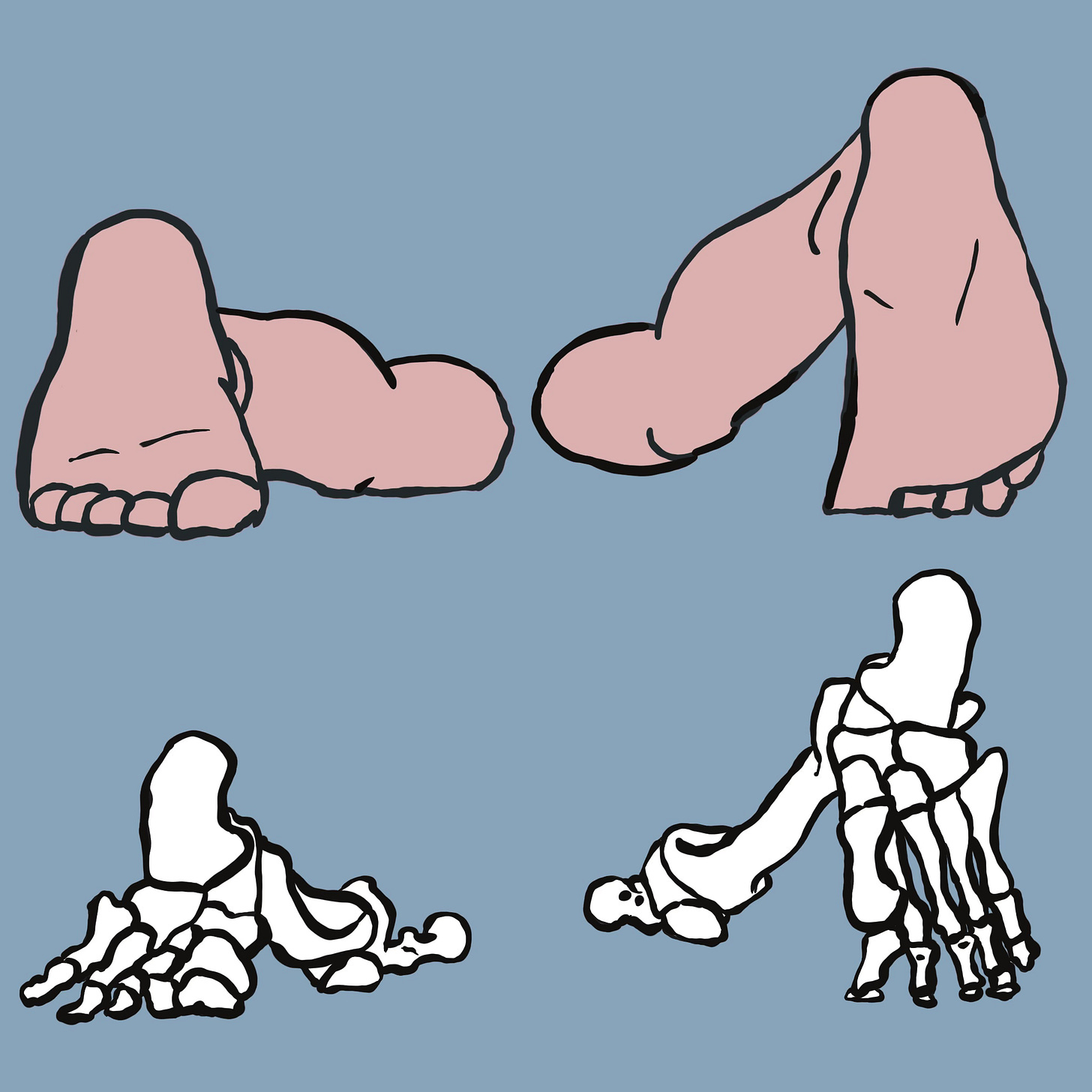Artisanal Bones
7 Things Worth Sharing
Hi All,
Here are 7 things worth sharing this week:
Have you ever thought “there’s something unusual about my body”? Maybe you felt embarrassed or didn’t want anyone else to know? Even if not, check out this amazing post from Kari Dru about “artisanal bones.” The replies are so encouragingly full of people telling unusual dimensions of themselves, outside-the-norm starts to seem normal.
Names of Bones. When anatomy gets taught in school, all the bones have latin names, but what do the names actually mean? They sound fancy, but a lot of them are actually imagistic and folksy.
Tibia, the load bearing bone in the lower leg, means “Flute.”
Fibula, the other bone in the lower leg, means something close to “Clasp,” which has to do with holding the ankle together.
Scapula, the technical term for shoulder blade, means “shovel” or “trowel.” Yeah, shoulder shovel :)
Clavicle, what we call the collar bone, means “key.” Bonus points if you can move your arm to feel the “key” bone turning. I haven’t figured it out (yet).
When and why should we choose complicated vs. simple words to describe parts of ourselves? I love this 1993 explanation from Feldenkrais trainer Mark Reese: “If you look at young children, the language they learn for the parts of the body usually are more Germanic rather than Latin. Like foot and neck and back. Those are more basic words and they are sensory based, whereas the words you learn in school are more anatomically based and may have a particular role in situations like surgery or navigation. But we learn these technical things later in life. They are not sensory based in the same way that the basic words like back or rolling or sliding or pushing or pulling. Those are words you learn when you are two years old.” So better to use simpler words when we want to talk to deeper, more youthful parts of ourselves.
The holiday season in the US (Thanksgiving) reminded me of something very simple and useful I want to share, because it was shared with me, which is: You can start a dance group. You can meet every week, even with one other person, to dance. And dance relationships nourish like nothing else. Tumblebones here in Boulder have been dancing with each other every week for the last 20 years. The Boulder Contact Lab has similar longevity. A small core of people meeting regularly to dance can do amazing things for the broader community. May I humbly suggest you find your local dance group? If you can’t find one, please start one.
True Dance is Always Local, in Real Life.
When was the last time you danced?
Who is the last person you danced with?
If you were going to start a dance group, who would be your first invite?
In the midst of my dancing, reading, and thinking this week, Betweenius arrived in my head. Betweenius is an alternative to Genius and a sub-species of Brian Eno’s Scenius (click and go to minute 30 for Scenius explanation). Betweenius is the name for when the connected actions of two people spark a third surprise type of thing neither would have done alone. Betweenius is easily recognizable in dance, also in love making, music making, acting, and child-caregiving. Any activity where two people are playing together.
Just for fun, I’ll end on a recommendation note and recommend “Your mum does the washing” by Joshua Idehen which made me laugh out loud.
Thanks for reading. This newsletter is an ongoing work of love made real by many little movements of my fingers on a keyboard. If you’d like to support, please share with a friend. You can also become a paid subscriber.
Touch the ground, Dance forever!
(the Tumblebones motto),
Ethan




